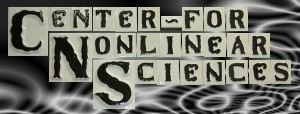Christine Selhuber-Unkel
Heidelberg University
"Adhesion Force Spectroscopy of Single Cells on Nanopatterned Substrates"
Abstract:
Cell adhesion is a highly complex biological process and a crucial step
for
many cell activities. In order to understand the physical principles of
cell
adhesion at the molecular level, surfaces of defined adhesion
properties are
required. In our experiments biofunctionalized nanopatterns are
employed to
position adhesion ligands in aquasi-hexagonal lattice. This allows
cooperative
interactions between cellular adhesion receptors
to be studied, for example between integrins. Integrin-mediated cell
adhesion
is a highly complex biological process and essential for numerous cell
functions. With nanopatterns, the distance between adjacent integrin
binding
sites is precisely defined.
Recent cell culture experiments have revealed that the distance between
the
integrin binding sites strongly affects cell spreading, cell motility
and the
formation of adhesion clusters, known as focal contacts. To quantify
the
adhesion cluster formation for different integrin binding site
spacings, we
studied cell adhesion forces with magnetic tweezers and atomic force
microscopy
(AFM). We found that an integrin binding site spacing of 70nm and
more prevents the cooperative formation of early adhesion clusters
already in
the first five minutes of cell-substrate contact. Additionally,
experiments on
mature focal contacts showed that the focal contact formation
cooperatively
increases the local adhesion strength. Our results were related to
theoretical
models and make a contribution to understanding the formation and
stability of
cell adhesion clusters.
School of
Physics Room N210 UNLESS
OTHERWISE NOTED.
